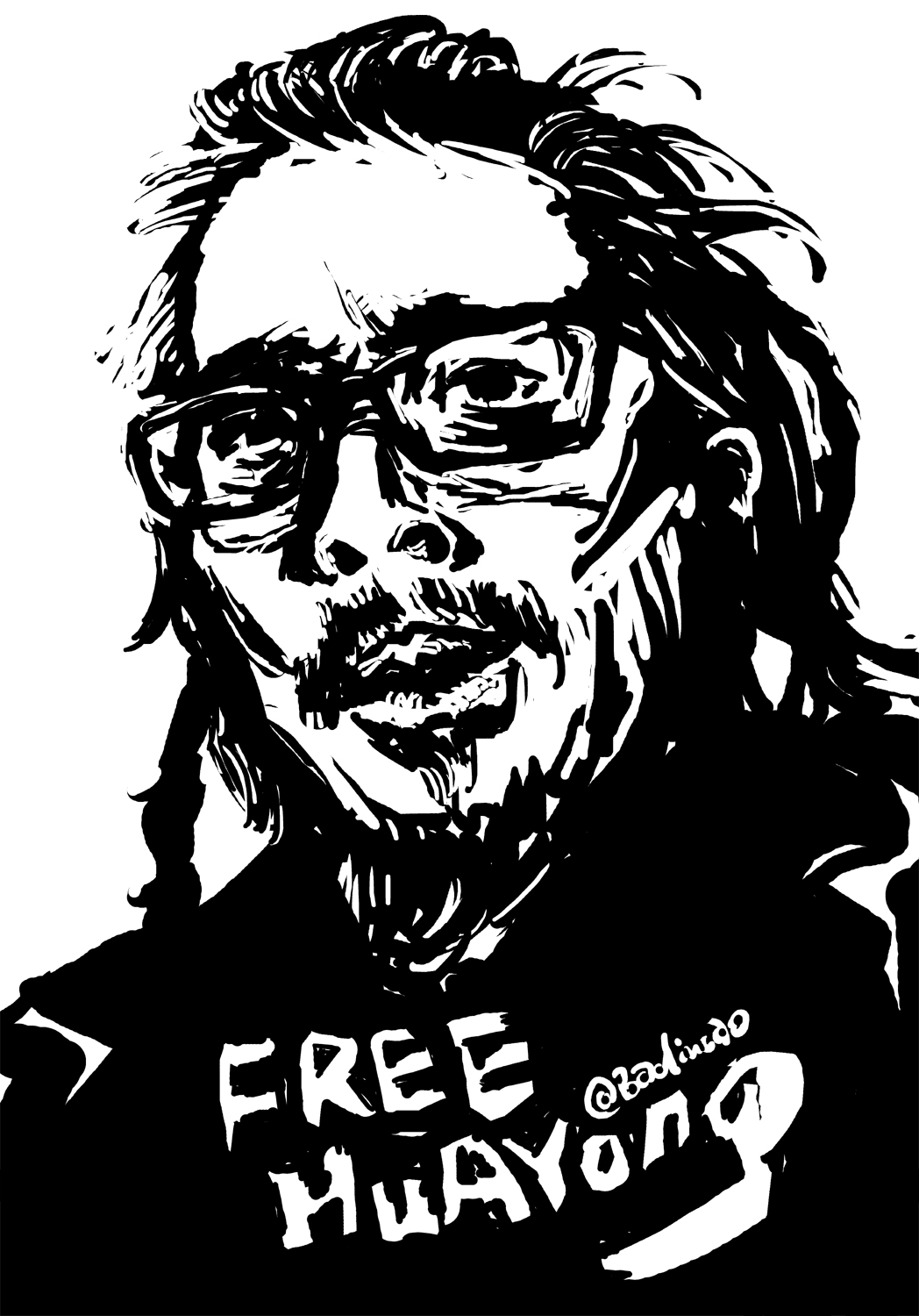Artist Hua Yong was briefly detained in Tianjin over the weekend after producing a series of videos documenting the mass eviction of migrant workers in Beijing. As police were arriving at the house where he was staying, Hua posted a video of himself in which he sang happy birthday to his young daughter and expressed his hopes for the future of China.
https://www.youtube.com/watch?v=NDfRTRTRWRM
https://www.youtube.com/watch?v=mLxQZK9PVdQ
Hua Yong's last message to his daughter is really quite heartbreaking "I did all this for your generation… so your generation can have justice, democracy, freedom of speech" https://t.co/9XwE01OhCT
— Natalie Thomas (@BBC_NatalieT) December 16, 2017
Following the encounter recorded in the video, Hua was detained on suspicion of “gathering a crowd to disrupt traffic.” He was released Monday under “qubao houshen,” or a “guarantee pending further investigation,” which can subject the detainee to travel and other restrictions for up to a year. Austin Ramzy reports for The New York Times that after Hua’s release he traveled to Chengdu to be reunited with his daughter.
Artist Hua Yong reunites with daughter in time for her birthday in southern Chengdu. He's on bail after being "criminally detained on suspicion of 'gathering a crowd to disrupt traffic order, " friends say. pic.twitter.com/VFIFAXKuCC pic.twitter.com/gDQdf03L07
— Joanna Chiu (@joannachiu) December 18, 2017
Free Hua Yong, by Badiucao
Before his detention, Hua had posted a series of videos documenting the destruction of neighborhoods in Beijing primarily occupied by migrant workers. (His videos are available on Youtube.) Thousands of workers have been forced out of their homes and the city in the wake of the demolitions, which Beijing authorities launched in November following a fire that killed 19 in a textile manufacturing neighborhood. Joanna Chiu at AFP has more on his video work:
In the weeks before his detention, Hua had uploaded dozens of videos on YouTube and Chinese social media platform WeChat documenting the destruction of migrant neighbourhoods on the outskirts of Beijing.
He set up the YouTube account only two weeks ago, but his videos have been viewed tens of thousands of times since then and some have been translated by others into English.
[…] Hua’s videos, usually shot with a selfie stick, brought viewers into recently demolished migrant neighbourhoods and recorded his conversations with displaced low-income workers.
In one he walks between heaps of rubble, gesturing around him and saying, “The sky is very blue today. But look at what’s behind me, all ruined in an instant.” [Source]
AFP reporters visited one of the neighborhoods in August and again after the evictions and found the remaining homes abandoned:
In August, shirtless men washed vegetables, brushed their teeth or cleaned themselves in the only facility with running water in the urban “village”.
Today, litter is strewn around the empty space under its tin roof.
The tables that people used to place their bowls or toiletries on are gone.
Even the silvery spigots have been ripped off the walls.
[…] Evictees said they received no compensation and feel forced to return to a place where they have no way of making a living.
“There is no use to protest,” said a woman surnamed Wang. “It will all be gone sooner or later.” [Source]
Public support for the affected migrant population has focused on the government’s usage of the phrase “low-end population” to describe them. (Read an explanation of the nuances of the phrase from writer Mo Zhixu on China Change.) Non-profits and other groups and individuals, like Hua Yong, trying to aid the evictees have been stopped by authorities, while news and commentary about the evictions have also been restricted. As Jeremiah Jenne writes in Radii China, official Beijing’s suspicion of non-governmental groups coming to the aid of the poor and disenfranchised has a long history:
The government is suspicious of independent organizations or individuals taking on roles it feels are the sole purview of the state. But official concern over non-governmental activism has a history in Beijing going back centuries before Xi Jinping’s New Era.
In her landmark study, Peking: Temples and City Life, 1400-1900, historian Susan Naquin cites several cases where authorities showed marked ambivalence to private charity, even in times of crisis. For example, when floods ravaged areas in and around the capital in 1801, officials argued that private individuals should be prevented from donating money to the relief effort.
The irony is that the Qing government, stretched thinly across a large empire, was reliant on private individuals, local elites, temple associations, lodges, and other entities to deliver state services even as the court fretted about the blossoming of rival centers of power. This dilemma meant frequent swings of policy where the state would allow organizations to serve the interests of the government by helping the people, and then crack down again. [Source]










